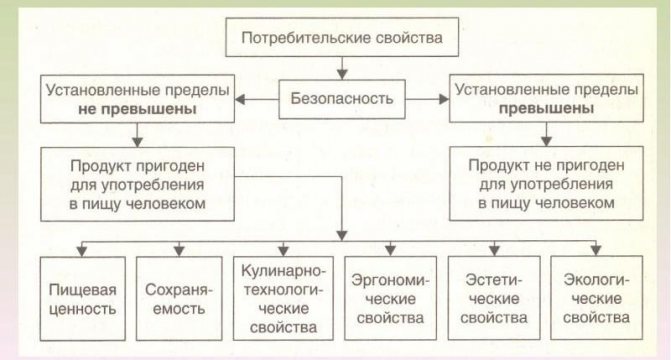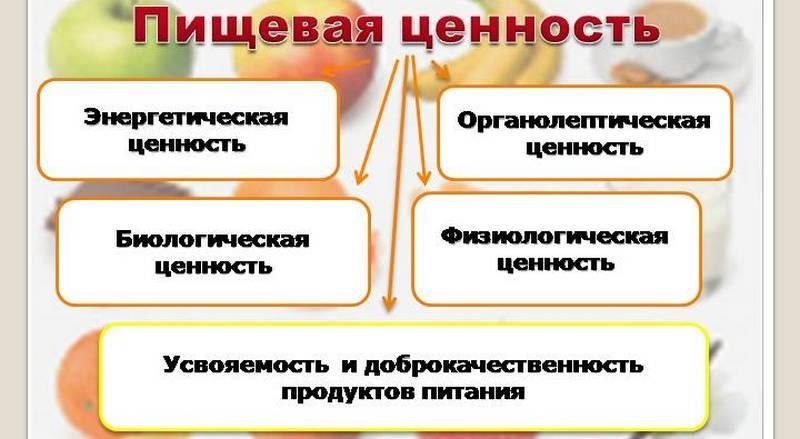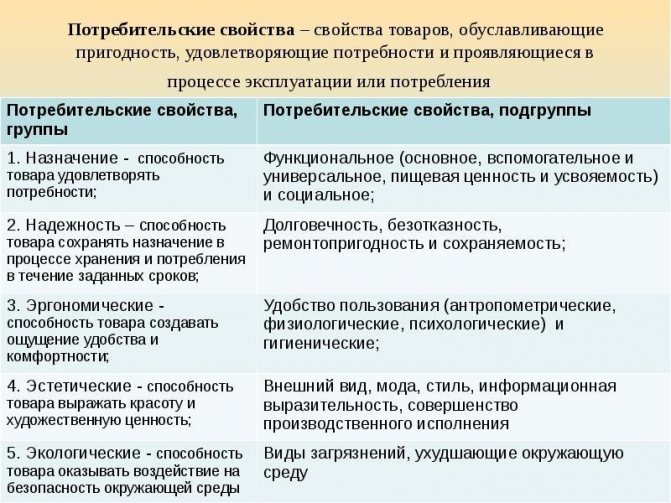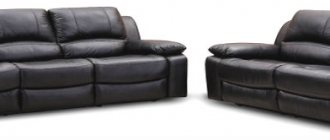What is product quality?
In order to fully disclose the topic, it is necessary to reveal the very definition of product quality. Various sources give many definitions of this term. This article will reveal “quality” from the point of view of the theory of commodity science and marketing. Let us give basic definitions.
In a broad sense, product quality is a set of properties that provide a product with a competitive advantage.
In more depth, the quality of a product is a set of characteristics that allow consumers to satisfy their needs in accordance with the purpose of the product and determine whether the product meets people’s expectations.
Proper and complete satisfaction of needs can be achieved through various measures of influence on production or sales. Here we are talking about factors that ensure product quality.
What factors ensure product quality?
In the theory of commodity science and marketing, each product is considered from the point of view of its life cycle. The product life cycle (hereinafter referred to as the life cycle) consists of the following stages:
- idea;
- research and development;
- production;
- implementation;
- exploitation.
Quality is formed at all stages of the life cycle, and at each stage certain factors influence quality.
They are divided into 3 groups:
- Factors shaping quality. What belongs to this group:
- Marketing research. They allow you to find out what properties consumers need and what level of quality the market requires.
- Quality of raw materials and production base.
- Quality of design and construction work.
- Quality of production process and assembly.
- Output control.
- Factors that stimulate quality: features of organizational management, pricing, measures to motivate employees, sanctions for dishonest performance of duties. These measures, to a greater extent, relate to management.
- Factors that support quality. These include: storage and transportation conditions, packaging, special labeling, operating conditions, after-sales service.
Classification
It was already said above that the consumer characteristics of a product are classified into the parameters of food and non-food products.
Since individual properties consist of a complex of less significant characteristics (for example, ergonomic properties consist of a complex of anthropometric, physiological and psychological characteristics), a detailed classification should be given.
Food items

A basic human need is food. The modern market offers a large number of food products, the main purpose of which is to satisfy this need.
This refers to plant and animal food products. Determining the quality of these products plays a significant role, since it shows the level of their usefulness and, accordingly, the need in the market.
Basically, the following parameters are used to determine the quality of an item:
- the nutritional value;
- biological value;
- physiological value;
- energy value.
The most important indicator is nutritional value. It characterizes virtually the entirety of the beneficial effects of a food product. This category includes indicators such as good quality, the presence of nutrients and minerals necessary for the normal functioning of the human body.

Not all foods have the same nutritional value. This main characteristic of food products directly depends on the set of microelements included in a particular product.
Food products that lack certain necessary elements have reduced nutritional value (sugar, starch). High-quality nutrition should not negatively affect the health of the consumer. This characteristic is ensured by testing food for the presence of harmful compounds, pathogenic microorganisms, and third-party elements.
Biological value means the presence in food products of substances that are not synthesized by the human body and, accordingly, can only enter it from the outside. These are a variety of biologically active substances, such as vitamins, microelements, amino acids.
Physiological value means the ability of a product to influence the consumer’s body as a whole, and its individual systems in particular. The energy value of the item depends on the quantity and proportional correspondence of fats/proteins/carbohydrates.
Attention! After using a food product, the body does not use all the elements included in its composition.
Therefore, when assessing quality, such consumer characteristics as digestibility are also used. This parameter allows you to assess the extent to which a particular item (and, accordingly, its constituent elements) is used by the human body.
Non-food products

The nomenclature of consumer properties and indicators means their totality, which determines the possibility of satisfying certain needs (both real and expected). This parameter determines the quality characteristics of consumer products.
All characteristics are divided into the following groups:
- Purpose . They determine the extent to which a particular product can satisfy the needs of society or its individual social category, as well as the extent to which the characteristics of the product correspond to the functions assigned to it (functional properties).
- Reliability. The ability of a product to fulfill its intended purpose over a certain period of time.
- Ergonomics. This consumer property means the product’s ease of use and compliance of the product with the characteristic features of the human body.
- Aesthetics. The aesthetic properties of a product depend on its appearance, color, and shape. Since when choosing a specific product, the average consumer pays the main attention to these properties, product design plays a very important role in marketing.
- Environmentally friendly. This characteristic reveals the ability of goods to influence the environment (both during production and transportation, and during operation).
- Safety. Characterizes the safety of the product for the person who uses it.
The more the characterized properties of a product correspond to expectations and requirements, the higher its quality. In turn, quality determines the presence of demand in the market.
Read how the consumer is protected from hidden product defects.
What is the quality of the product?
In order to answer this question, you need to turn to theory. The very concept of “quality” does not characterize a product either positively or negatively. If quality is the ability to satisfy the needs of the consumer of a product, then the product may or may not satisfy a certain need. A good quality product fills a need, an inadequate one does not. In addition to commodity science, these concepts are widely used in jurisprudence.
A product of proper quality is a product that meets accepted norms and standards; the consumer can use this product for its intended purpose, to the fullest extent and extent.
A product of inadequate quality is a product that does not comply with the mandatory requirements of the law, or the product specification, or the purposes for which the product is usually used, or a sample.
Here you need to explain what requirements and standards the product must meet. At the state level, this issue is dealt with by Gosstandart. Mandatory requirements for all business entities are established. The following types of regulatory documentation are in force in the Russian Federation: interstate standards (GOST), state standards of the Russian Federation (GOST R), industry standards (OST), enterprise standards (STGT), technical specifications (TU). Also, an enterprise can voluntarily be certified for compliance with ISO (International Organization for Standardization) requirements.
Quality Standards
In the age of advertising, it is difficult to determine by appearance how useful a product will be. Technologies for presenting goods to consumers are multi-layered and often deceptive, because a sandwich in a bun with an appetizing crust that can last for five years without changing its taste or appearance is unlikely to be useful, but at the same time it remains a quality product. In order to decide on this issue and not get into trouble, a manufacturer that respects itself and its consumers is guided by standards and refers to them to confirm the quality of the goods produced.

Product quality indicators
Quality indicators are classified according to several criteria. Depending on the number of properties being studied:
- single (for one product property);
- complex (for a certain set of properties);
- generalized (for the entire population).
By property type:
- ergonomics;
- safety;
- efficiency;
- aesthetics;
- efficiency, etc.
According to the assessment form:
- quantitative (those that can be measured in quantitative terms);
- dimensionless (can be expressed as a coefficient or described verbally).
Depending on the stage of gastrointestinal tract:
- predictable;
- design;
- production;
- operational.
Consumer demand and quality
The market economy dictates its own rules of the game. Often, demand for a product forces the manufacturer to produce products that are not of the best quality, thereby harming their image and undermining trust in the product. In this case, during the rush period, it is preferable not to succumb to the temptation of both sides of the interaction: the consumer should not rush to choose and purchase, it is better to find out the quality of the product (the determination of this indicator is the starting point in preferences), and the manufacturer should not chase short-term profits, but release a product with high quality indicators.
Quality assessment methods
Depending on whether it is possible to make a quantitative assessment of the product parameter under study, methods are divided into objective and subjective.
Objective methods
Objective methods are based on measuring the quantity of a parameter or the deviation of the actual parameter from the level accepted by standards or other regulatory documents.
Types of objective methods:
- Measuring. Based on determination using measuring equipment, instruments, and other measuring instruments. As a result of measurements, exact values are obtained, expressed in units of measurement: meters, kilograms, watts, liters. The disadvantage is that it is often necessary to remove one or more sample units from a batch for measurement.
- Registration. It is based on counting the number of failures, failures per unit of time, or on counting the number of defective goods in a batch. The disadvantage is the length and complexity of the method.
- Settlement. Determining the quality indicator by using mathematical models and formulas.
Biased methods
Biased or empirical methods are based on assessing product quality through the senses, personal experience or intuition. There are three varieties of this method:
- Organoleptic method. Based on assessment through human senses: sight, smell, touch, hearing and taste. Its advantage is that there is no need to use special devices. It can be used to evaluate, for example, the sound of an instrument, the smell of perfume, the structure of fabrics, and the hardness of objects.
- Expert method. This is a type of organoleptic. The properties of objects are assessed by a group of experts using points. Based on the score, a conclusion is made about the properties of the product. The accuracy of the data obtained depends on the qualifications of the expert group.
- Sociological method. The data is obtained through research into the opinions of the general public. Implemented through questionnaires, tastings, exhibitions, automated telephone surveys, etc.
Product
- This is the central object of the entire marketing complex.
In marketing, a product is viewed from two sides.
1. A product is a means by which specific needs can be satisfied.
2. A product is a product created for sale. There is an opinion that the product is produced at
factory, plant, and the product is created by marketers. This means that in order for the product of labor to become a commodity, it needs to go a long way. The path of product development in marketing can be represented in the form of a “marketing onion” of a product, consisting of three levels:
1) product as a concept;
2) actual performance of the goods;
3) goods with reinforcement.
In the process of creating the first level of a product, the specialist must determine what specific needs the consumer can satisfy and what benefits he can receive when purchasing this product.
The second level includes the direct creation of the product, ensuring delivery to its destination, storage, and safe use.
The third level is characterized, in fact, by the market itself and the requirement from the company to rationally use the entire marketing mix in order to meet the needs of customers (flexible pricing strategy, sales promotion methods, advertising, service, etc.). Modern business is characterized by the most intense competition at this level.
Consumer properties of the product.
From a marketing point of view, the consumer first of all purchases not the product, but the benefits that it can provide him. Therefore, it is important to identify the main characteristics of the product:
1) functionality;
2) reliability;
3) durability;
4) design;
5) ergonomic abilities (ease of use, maintenance, repair, etc.);
6) accompanying documentation;
7) prestige.
Before you start producing a product, it is necessary to analyze its consumer properties, including identifying the reasons why competitors' products are purchased.
Consumer value is understood as the totality of consumer properties of a product.
The latest survey data shows that 8 out of 10 buyers prefer the consumer value of a product over its cost. 20 years ago the ratio was 3 out of 10.
The following list of consumer properties of the product is distinguished: quality; ease and ease of use; consistency of price, quality and consumer value; brand prestige; reliability of delivery; after-sales service; choice, etc.
Table of contents
Product quality control
As mentioned above, product quality control must be carried out at all stages of the life cycle.
Almost all large manufacturing enterprises have independent quality departments (QD) and laboratories that carry out incoming and outgoing control of manufactured products for compliance with GOSTs, technical specifications and other standards. Periodically, regulatory government bodies conduct scheduled and unscheduled inspections of the production process itself, equipment, skill levels of employees, and the product being manufactured. Enterprises purchasing goods for resale must require the seller to have all the necessary permits, certificates, passports established by law, or independently obtain them from independent certification bodies. Particular attention should be paid to rejecting goods and preventing defective goods from entering the distribution network.
Quality control in modern market realities is an important task for all subjects of production and trade, since a quality product mainly affects customer loyalty and gaining their trust. Inadequate product quality has a detrimental effect on the seller’s reputation and may lead to loss of market share.
Balance of quality
Qualified engineers who create new technologies and products know well that it is impossible to optimize products in all respects at once - it is simply impossible. The main skill for a product designer is working with contradictory properties, their “reconciliation” within the framework of one, uniquely balanced product, which, precisely thanks to its “bouquet of qualities,” will occupy a consumer niche in the market.
Competent business leaders and managers at all levels must also be good at “working with contradictions,” choosing a priority set of quality indicators and balancing non-priority ones. After all, managers are also designers, although not of a product, but of a business - not a technical, but an economic and social system!
The military industry gives us many examples of balance or imbalance of product quality - which is not surprising. Let's look at a couple of examples from this area.
So, for example, during the Second World War, fascist designers designed super-heavy Karl mortars with a caliber of 615 mm. But since they were not needed to break through the Maginot Line in France, the Nazis decided to use them on the Soviet-German front. Despite their amazing capabilities, experts are still debating whether these guns can be considered self-propelled. Formally, it’s possible, because they had tracks and engines, but the “Carls” could crawl under their own power only a few kilometers. It is not surprising that all six “Karlovs” that made up the fascist battery did not manage to get anywhere during the rapid advance of the Soviet Army. All of them were either destroyed or captured by our army.
The opposite example - an example of an amazing balance of qualities - is given to us by the legendary tank of the 2nd World War - the Soviet T-34. If we consider each of its qualities separately, it was not completely superior to all the combat vehicles of the Reich and other states. But in terms of the combination of qualities on the battlefield and excellent manufacturability (suitability for mass production and maintainability), this machine had no equal.
If you have any questions, Best Service employees will be happy to help you. Contact us by phone or in any other way convenient for you.










